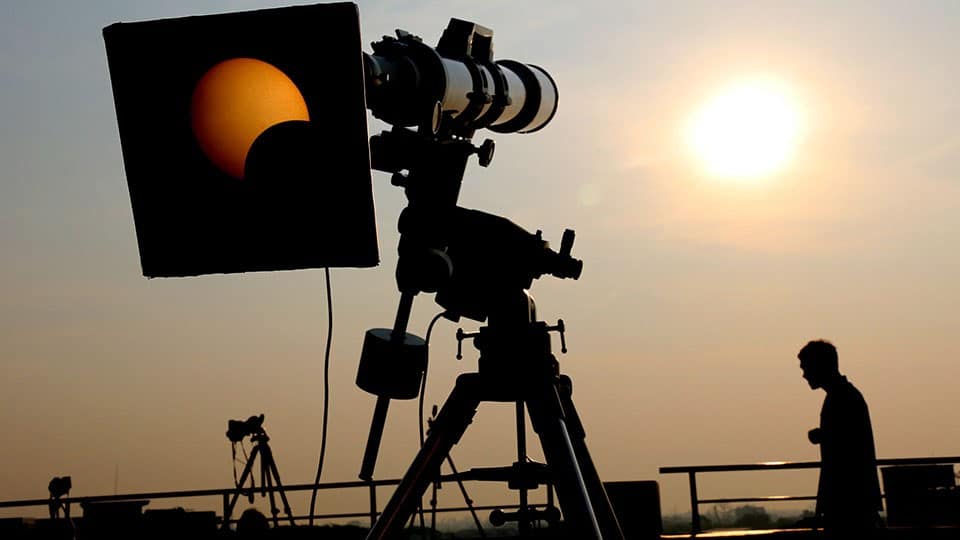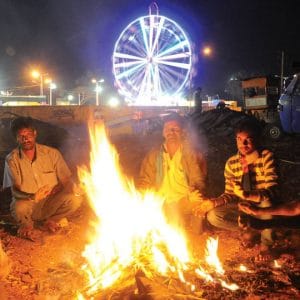Live streaming in IIA YouTube channel
Mysore/Mysuru: The Indian Institute of Astrophysics (IIA), Bengaluru, in association with COSMOS, Mysuru, and Jawaharlal Nehru Planetarium, Bengaluru, has organised an eclipse watch tomorrow (Oct. 25) at Arivu School, Lingambudhipalya in city, between 3.45 pm and 5.45 pm.
A partial eclipse of the Sun will occur on Oct. 25 (3 Kartika, 1944 Saka Era). In Mysuru, the eclipse starts at 5.14 pm and will end at 5.59 pm. The end of the eclipse will not be visible from Mysuru as it is after sunset.
Dr. S.N. Prasad, M. Krishnamurthy, Kollegala Sharma, Mysore Science Foundation and others will be present at the event to interact with the public and answer their questions. They will hold a discussion in Kannada and English and help the general public to clear their doubts and explain facts.
For details, call COSMOS Project Associate N. Amoghavarsha on Mob: 63621-59474 or e-mail: [email protected]
Besides, IIA has also organised live streaming of the partial solar eclipse as seen at Hanle (Himalayan Skies), Ladakh. Hanle has one of the biggest telescopes in India which is about 2.01-meter diameter.
Solar eclipse tomorrow is partial and will be seen for the longest duration in India from Ladakh and Jammu & Kashmir. While in Karnataka, the chances of clouds obscuring the eclipse are more in Ladakh, the obscuration will be around 52 percent. IIA has arranged to live stream the eclipse from Ladakh to Mysuru under its COSMOS project.
The live broadcasting of the eclipse from the Indian Astronomical Observatory in Hanle, Ladakh, is scheduled between 4 pm and 5.30 pm where the public may view the eclipse from Ladakh (and other places), with IIA astronomers explaining about the eclipse.
Scientists will also be answering queries from the people at the live stream which can be accessed by visiting https://youtu.be/evJBhD-Oigc at 4 pm. Partial solar eclipse live stream from Hanle, Ladakh, with 52 percent visibility may be seen from 4.21 pm by visiting https://youtu.be/QsBiwTsLbkE
Similarly, a programme in collaboration with Jawaharlal Nehru Planetarium and COSMOS will take place in Kannada which will be live streamed at https://youtu.be/Ow42QJ-laQY from 2.30 pm.
A set of three videos created by IIA students to explain the eclipse to the general public in Kannada, Hindi, Tamil, Malayalam, Bengali and Garhwal will be available in their YouTube channel: https://www.youtube.com/playlist?list=PLHt_sZ2bz_owwQDLyw81T2K_E9zs2bEd_ and also on Instagram Page https://www.instagram.com/iiabengaluru/
The poster and brochure of the overall event is available at https://drive.google.com/file/d/14FpXtBhqrmxu_bkLvJ5xDlBkM_OD25bb/view?usp=sharing.
NOTE: Next solar eclipse visible from India is on Aug. 2, 2027.








Recent Comments